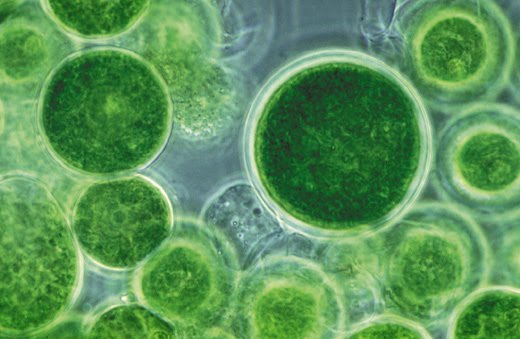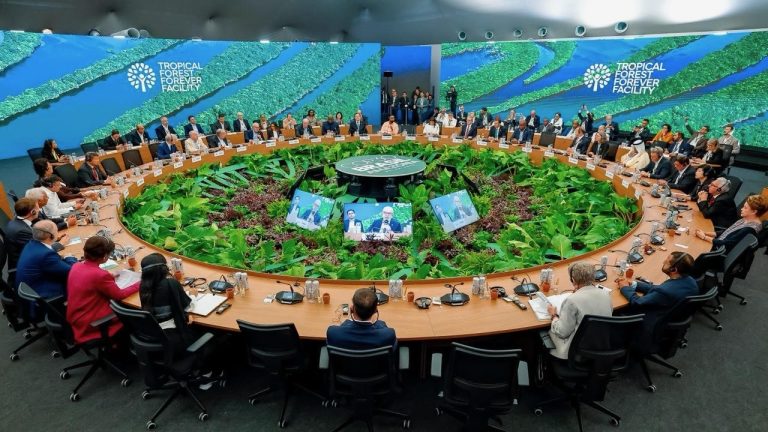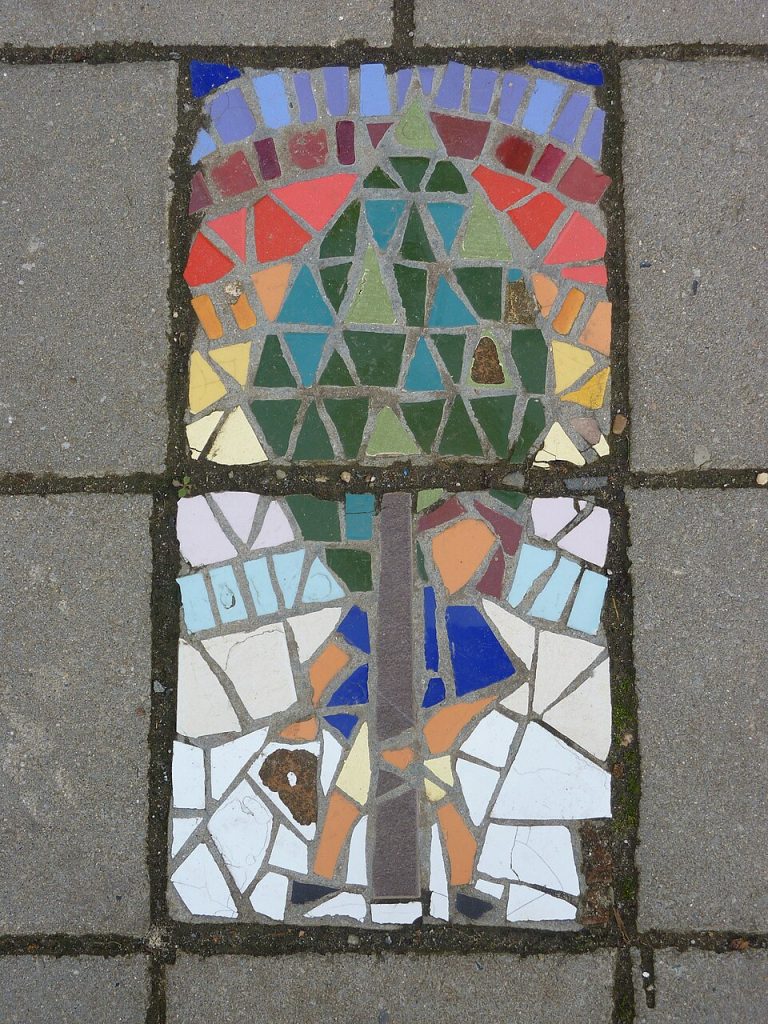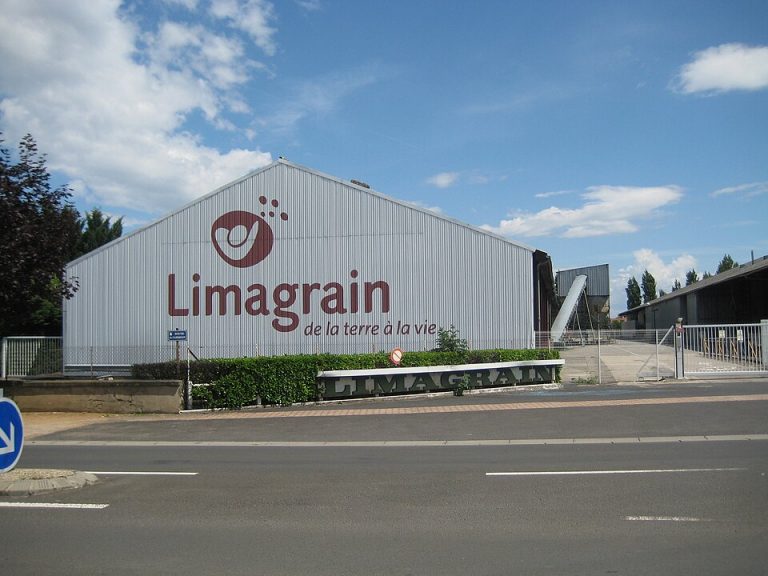News
Object of all desire, do GM algae really exist?
Algae are the surprise guest in the European Commission’s deregulation proposal. How are these organisms used by the industry? In which countries are they produced? And above all, what genetic modifications are being made for which commercialisation? This overview is of importance because, according to the European Commission, their deregulation – like that of other plant GMOs – would be justified by the “evidence […] on the safety” of these GMOs. However, these GM algae do not exist, as the technical protocols are not yet mastered…

When algae will be genetically modified using new techniques, they may no longer be subject to the same rules governing GMOs, just like terrestrial plants. This is the wish of the European Commissioni, which deregulation proposal made in July 2023 contained two Latin terms into the description of organisms covered by its proposal. It wrote that “based on the current scientific and technical knowledge in particular on safety aspects, this Regulation should be limited to GMOs that are plants, i.e. organisms in the taxonomic groups Archaeplastida or Phaeophyceae”.
This article outlines the current commercial uses of algae and existing genetic modification projects. The terminology used – algae, macroalgae, microalgae – is based on usage as found in various reports. As to whether all or some of the families of algae described below are covered by the European Commission’s proposal, the question remains open and will be the subject of a future article. But in any case, given the difficulties to genetically modify algae, including them in the deregulation proposal seems premature, to say the least.
Red, green, brown, macro, micro algae…
Whether in unicellular (microalgae) or multicellular (macroalgae) form, algae have recently become the object of considerable international and European interest, with the European Commission’s 2022 Blue Bioeconomy Plan being a prime example. A year earlier, in 2021, the Food and Agriculture Organization of the United Nations (FAO) published a reportiii on the state of play in this field, based on figures from 2019. That year, total world production of algae was almost 36 million tonnes, almost all of which was macroalgae (99.84%). If asian countries accounted for over 97% of this production, little was done in Europe (0.8% of world production), Africa (0.41%) and the two American continents (1.36%).
Harvested from the sea or cultivated in marine facilities close to the coast, macroalgae can be classified as red, green or brown. Brown seaweed accounts for almost 50% of the world’s seaweed production and is used in human food (such as Kombu soup or Wakame salads) or animal feed (abalone in particular). They are also a source of various substances used in human and animal nutrition, as fertiliser in agriculture, in pharmaceuticals and as packaging. The two main brown seaweeds used are Laminaria and Undaria.
Red algae make up the other half of the world’s production. They are used in human food to produce agar or in animal feed (abalone). The red algae Kappaphycus is used to obtain molecules used by the food and non-food industries. Porphyra is a source of food for soups and sushi. The main species are Kappaphycus, Gracilaria and Porphyra.
Finally, green seaweed is also used, although in smaller quantities than brown and red seaweed, at just under 17,000 tonnes a year. This algae is used as food (salad, for example), but also to feed abalone, as an agricultural fertiliser, in pharmaceuticals, cosmetics or for waste treatment.
Microalgae, named this way because they are microscopic, can be found in both marine and fresh waters. Several are used by industry, with the FAO giving as examples chlorella, diatoms, Nannochloropsis, Schizochytrium, Crypthecodinium and spirulina, which is in fact a cyanobacterium which is “usually deemed part of microalga“. In 2019, more than 56,000 tonnes were produced internationally, the vast majority of which was spirulina. China, with almost 55,000 tonnes, is the main producer of microalgae. Commercial uses for these algae, as listed by the FAO, include human food (in the form of chlorella or spirulina powder, for example), food supplements (carotenes, astaxanthin, etc.) and cosmetics (with polysaccharides or colourants). Projects involving the use of microalgae for “wastewater treatment, algae meal and algae oils, carbon sequestration and biofuels” are also cited as rapidly expanding markets in the near future.
A “promising” future for industry
In addition to their use in human food and animal feed or as fertilisers in agriculture, algae are also of interest to the industry because of their metabolic capacity to capture nitrogen and phosphorus based compounds. These capabilities captured the attention of the industry for use as a bioremediation or carbon capture agent. Their use as a feed supplement for animals is also touted as potentially helping to reduce methane emissions.
However, these uses are subject to a number of limitations for the industry. Among these limits, the FAO lists competition for coastal space with urban areas, fishing or fish farming activities, pollution of surrounding waters and rising ocean temperatures. The “quality” of algae seedlings is also listed among the limitations encountered. The “deteriorating farming environments, such as rising seawater temperatures and more frequent and severe disease outbreaks” are thought to contribute to this loss of quality. Poor management or constraints in the production of strains are also involved, leading to “trait degeneration and the consequent loss of agronomic value of a farmed type“. But the FAO cites genetic improvement of these strains as a possible solution! It writes that “genetic improvement technologies, such as strain selection, selective breeding, hybridization, micropropagation (also known as tissue culture) and genetic markers, can help improve seedling quality and production efficiency“.
But what are the uses of these “genetic improvement technologies“, and more specifically those of genetic modification, even if they are not specifically named by the FAO? Two scientific articles provide further information on the current state of research. One of the two articlesiv warns at the outset that, in 2019, when researchers “assessed about 100 genomes of micro and macroalgae, they found that over 50% of the genes were of unknown function“! While they point out that the study of mutants “that occur either naturally or by induction” enabled researches aiming at associating functions with genes, they add that in 2024, the date of publication of their article, “for most of these mutants the causative mutations remain unknown“.
Genetically modified microalgae that can be disseminated?
The scientific articlev by Austrian and German researchers, published in June 2024, reviews the projects for genetic modification of microalgae, whether by transgenesis or using new techniques of genetic modification. On the basis of a scientific bibliography and the reading of various reports (grey bibliography), the authors have identified 36 projects for the genetic modification of microalgae that could involve dissemination in the environment other than via confined environments (such as fermenters for microorganisms). As details of the techniques used are not provided, it is not possible to identify projects involving new techniques and therefore potentially resulting in GMOs that the Commission would like to deregulate. Nevertheless, the panorama is impressive to observe. Of these 36 projects (see table below), only four are described as “market development” and only involve transgenic algae, i.e. GMOs that would remain regulated despite the deregulation envisaged by the European Commission. The authors state that they have not identified any algae modified by new genetic modification techniques.
According to the research carried out, the majority of projects involving the genetic modification of microalgae concern the agrofuels sector. Of the 36 projects (see table below), 20 are designed to induce traits in microalgae that are of interest to this sector, 3 of which are in the commercial development phase. 7 projects are in the field of biocontrol, with, for example, genetic modifications carried out to enable GMO algae to be used as a vaccination agent, particularly in shrimp farming; or the expression of a transgene encoding an interfering RNA that will prove insecticidal when Aedes Aegypti larvae feed on these algae. 5 other projects are in the field of what is promoted as environmental decontamination using living organisms. 3 projects involve carbon capture or the production of an animal feed additive.
As the authors of the article point out, these 36 projects are destined to lead to the marketing and production and/or dissemination of GMO microalgae in the environment. While it is not possible, as they indicate, to know whether this production and dissemination will take place in confined or open areas, the latter possibility is not ruled out.
What about GMO macro-algae?
Another scientific articlevi, also published in 2024, provides more specific information on the use of new techniques of genetic modification on macroalgae. As the authors explain, the use of these techniques is clearly in its infancy in a few macroalgae.
This applies to transgenesis itself. This technique, used on macroalgae, has only enabled transient expression of transgenic sequences, with the authors adding that “there is a paucity of reports describing successful stable transformation in macroalgae“. Among the difficulties encountered are the ability of algae to switch off the expression of inserted transgenes and a lack of knowledge of the genetic sequences involved in regulatory activity.
As far as new techniques of genetic modification are concerned, the situation is no more advanced, with “successful reports of genome editing in macroalgae [being] very scarce, much like stable transformation protocols“. At the time of publication of their article, the authors note that only the Crispr/Cas tool had been tested on macroalgae. They list 3 articles reporting success with brown and green algae, but these protocols did not go through a transgenesis stage, injecting the Crispr/Cas protein complex directly. This approach is explained by the constraint of not being able to achieve stable transgene expression in these organisms. Above all, the authors state that these 3 articles constitute “proofs-of-concept“. In other words, they show that a genetic modification protocol using the directly injected Crispr/Cas tool is possible. But “further research is needed to increase the mutation efficiencies and broaden the applicability of targeted mutagenesis systems in seaweeds“.
Reading the requirements listed by the authors for a potential successful use of genetic modification techniques on macroalgae, such a prospect still seems remote. The researchers need “more genomes of seaweed species […] available“. Species that, ideally “should have life cycles that can be completed in laboratory settings, allowing genetic transformation protocols to be developed“. Another limitation to be resolved is the very limited number – just one in fact – of genetic sequences that can be used as markers (the equivalent of antibiotic resistance genes introduced in transgenic form for use as markers in plants). Lack of knowledge about the interactions between genetic sequences is also a problem. Last but not least, the authors stress that a major limitation is the very low mutagenesis efficiency observed. Their conclusion is therefore quite clear, with the authors considering that “as the genome editing field is developing at a rapid pace, new tools are also continuously being developed, which could offer benefits in terms of efficiency, adaptability, and precision“.
To sum up, the genetic modification of macroalgae in the laboratory is an approach that is still a long way from commercial reality. According to the authors of the article on macroalgae published in 2024, only 3 species of macroalgae, the 2 brown algae Ectocarpus spp and Saccharina Japonica, and the green alga Ulva Prolifera, have been the subject of a fundamental research article showing possible genome modification using “new techniques“. No article has yet reported such a possibility for red algae. However, the European Commission is including these organisms in its deregulation proposal for July 2023…
Table 1 : Genetic modifications of microalgae (based on Miklau et al.vii)
| Stage | GM organism | Area of use | Trait |
|---|---|---|---|
| Basic research | Chlamydomonas reinhardtii | Bioremediation | metal absorption (Copper) |
| Chlamydomonas reinhardtii | Bioremediation | metal absorption (Nickel) | |
| Chlamydomonas reinhardtii | Carbon sequestration | CO2 removal efficiency | |
| Chlamydomonas reinhardtii | Agrofuel | Enhanced triacylglycerol biosynthesis | |
| Chlamydomonas reinhardtii | Agrofuel | Increased lipid content | |
| Chlamydomonas reinhardtii | Agrofuel | Fatty acid secretion | |
| Chlamydomonas reinhardtii | Agrofuel | Increased lipid content | |
| Chlamydomonas sp. | Agrofuel | Lipid accumulation | |
| Fistulifera solaris (m) | Agrofuel | Increased lipid content | |
| Chlamydomonas reinhardtii | Agrofuel | Modification of the CrACCase gene | |
| Nannochloropsis salina | Agrofuel | Increased growth | |
| Phaeodactylum tricornutum | Agrofuel | Increased lipid content | |
| Chlamydomonas reinhardtii i | Agrofuel | Enhanced hydrogen production | |
| Chlamydomonas reinhardtii | Agrofuel | Enhanced hydrogen production | |
| Advanced research | Chlamydomonas reinhardtii | Bioremediation | Herbicide removal (Penoxsulam) |
| Chlamydomonas reinhardtii | Bioremediation | Metal absorption (Cadmium) | |
| Chlamydomonas reinhardtii | Bioremediation | Cyanide removal | |
| Chlamydomonas reinhardtii | Biocontrol | Inhibited development and molting of Aedes Aegypti | |
| Chlamydomonas reinhardtii | Biocontrol | Oral vaccine delivery for shrimp cultures | |
| Chlamydomonas reinhardtii | Biocontrol | Production of antimicrobial peptide | |
| Chlamydomonas reinhardtii | Biocontrol | Expression of antiviral dsRNA against shrimp virus | |
| Chlorella sp. | Biocontrol | Production of antimicrobial peptide | |
| Nannochloropsis oculata | Biocontrol | Production of bovine antibiotiques | |
| Nannochloropsis oculata | Feed additive | Production of fish growth hormone | |
| Dunaliella salina | Biocontrol | Expression of a viral protein | |
| Chlorella sp. | Carbon sequestration | Carbone sequestration | |
| Chlamydomonas reinhardtii | Agrofuel | Altered fatty acid profile | |
| Chlamydomonas reinhardtii | Agrofuel | Increased fatty acid and lipid content | |
| Species not specified | Agrofuel | Hyrdrogen production from water | |
| Chlamydomonas reinhardtii | Agrofuel | Increased lipid production | |
| Chlamydomonas reinhardtii | Agrofuel | Increased lipid content | |
| Phaeodactylum tricornutum | Agrofuel | Increased lipid content | |
| Market development | Chaetoceros gracilis (m) | Production / Containment | Utilization of phosphite as a sole source of phosphorus |
| Scenedesmus dimorphus | Agrofuel | Increased fatty acid production | |
| Nannochloropsis oceanica | Agrofuel | altered fatty acid composition | |
| Prototheca morimorfis | Agrofuel | Triglyceride |
i Eric Meunier, « GMO algae: a future raw material for industry », Inf’OGM, 12 February 2025.
iii Cai, J. et al., « Seaweeds and microalgae: an overview for unlocking their potential in global aquaculture development. FAO Fisheries and Aquaculture Circular », No. 1229, Roma, FAO.
FAO, « Global seaweeds and microalgae production, 1950–2019. WAPI factsheet to facilitate evidence-based policy-making and sector management in aquaculture », June 2021.
iv De Saeger Jonas et al., « Genome editing in macroalgae: advances and challenges », Frontiers in Genome Editing, vol. 6, 2024.
v M. Miklau et al., « Horizon scanning of potential environmental applications of terrestrial animals, fish, algae and microorganisms produced by genetic modification, including the use of new genomic techniques », Frontiers in Genome Editing, June 2024.
vi De Saeger Jonas et al., « Genome editing in macroalgae: advances and challenges », Frontiers in Genome Editing, vol. 6, 2024.
vii M. Miklau et al., « Horizon scanning of potential environmental applications of terrestrial animals, fish, algae and microorganisms produced by genetic modification, including the use of new genomic techniques », Frontiers in Genome Editing, June 2024.









